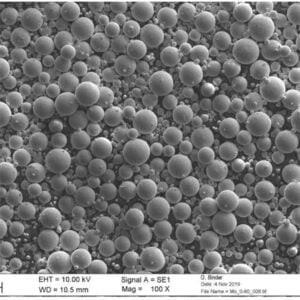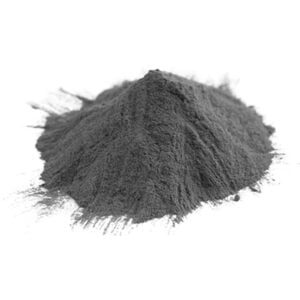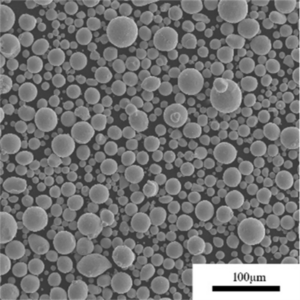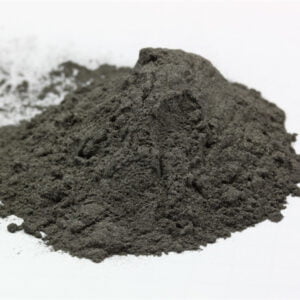Aluminum Alloy Powders
Table of Contents
Aluminum alloy powders offer light weighting combined with strength, durability and corrosion resistance across automotive, aerospace and industrial applications. This guide covers common compositions, properties, manufacturing methods, sizes, suppliers, applications and selection.
aluminum alloy powder Overview
Spherical aluminum powders with controlled particle size enable high performance light metal components via PM, MIM and AM:
| Alloys | 2xxx, 6xxx, 7xxx series Aluminum |
| Properties | Low density, strength, hardness, wear resistance |
| Processes | Powder metallurgy, Metal injection molding, Aluminum AM |
| Applications | Automotive, Aerospace, Industrial |
| Benefits | Weight reduction, performance, recyclability |
Advanced aluminum powders balance ultra lightweight density with improved mechanical properties over cast or wrought alloys.
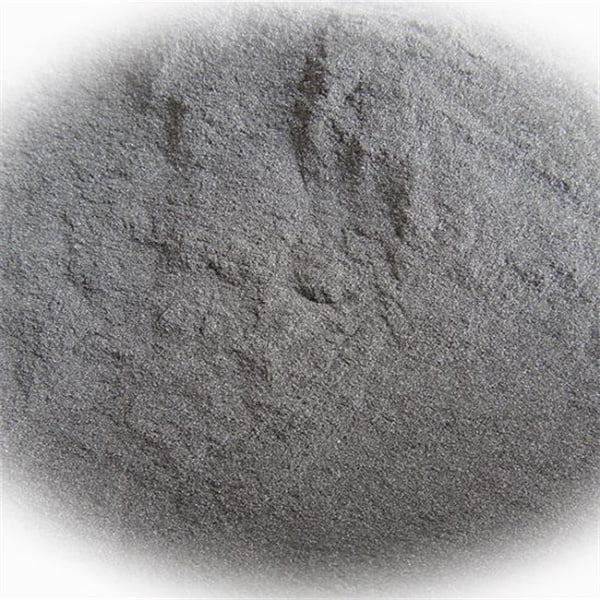
aluminum alloy powder Types
| Aluminum Alloy Series | Key Alloying Elements | Properties | Applications |
|---|---|---|---|
| 1XXX Series (Pure Aluminum) | Minimal alloying elements (< 1% total) | * Excellent workability and formability * High electrical conductivity * Good corrosion resistance * Low strength | * Electrical conductors (wires, busbars) * Heat exchangers * Food packaging * Decorative applications |
| 2XXX Series (Al-Cu) | Primarily copper (Cu) | * High strength * Good machinability * Heat treatable for further strengthening * Lower corrosion resistance compared to 1XXX series | * Aerospace components * Automotive parts * Sporting goods (bicycles, baseball bats) * Building and construction materials |
| 3XXX Series (Al-Mn) | Manganese (Mn) is the main alloying element * Good workability and formability * Moderate strength * Excellent brazing characteristics * Lower corrosion resistance compared to 1XXX series | * Cooking utensils * Pressure cooker liners * Sheet metal forming * Welding wire | |
| 4XXX Series (Al-Si) | Silicon (Si) is the main alloying element | * Good castability * Weldability * Moderate strength * Lower corrosion resistance compared to 1XXX series | * Engine blocks * Cylinder heads * Automotive parts * Building and construction castings |
| 5XXX Series (Al-Mg) | Magnesium (Mg) is the primary alloying element * Excellent corrosion resistance, especially in saltwater environments * Good weldability * Moderate strength * Lower workability compared to 1XXX and 3XXX series | * Marine applications (boat hulls, decks) * Storage tanks * Chemical processing equipment * Welded structures | |
| 6XXX Series (Al-Mg-Si) | Magnesium (Mg) and Silicon (Si) are the main alloying elements * Excellent combination of strength, workability, and corrosion resistance * Heat treatable for further strengthening * Widely used for extruded applications | * Building and construction (window frames, doors) * Transportation (aircraft parts, truck wheels) * Furniture * Machined components | |
| 7XXX Series (Al-Zn) | Zinc (Zn) is the primary alloying element * High strength * Good machinability * Excellent wear resistance * Lower corrosion resistance compared to other series | * Aircraft components (wings, fuselage) * Sporting goods (golf clubs, skis) * High-strength structural applications | |
| 8XXX Series (Other Elements) | Alloyed with various elements like lithium (Li) or lithium and copper (Li-Cu) * Very low density * High strength-to-weight ratio * Limited weldability * Expensive | * Aerospace applications requiring minimal weight * High-performance racing components * Special military applications |
aluminum alloy powder Properties
| Property | Description | Benefits in Additive Manufacturing |
|---|---|---|
| Composition | Aluminum alloy powder isn’t pure aluminum. It’s a blend of aluminum with various elements like copper, magnesium, silicon, or lithium, depending on the desired final properties. These elements are listed in a four-digit code (e.g., AA2024) that defines the alloy series and major alloying elements. | By using different alloying elements, manufacturers can achieve a wide range of properties in the final printed part, including strength, corrosion resistance, and weight. |
| Particle Size & Distribution | The size and distribution of the aluminum alloy powder particles significantly impact the printing process and final part quality. Particle sizes typically range from 15 to 150 microns, with a tight distribution (similar particle sizes) preferred for optimal flow and packing during printing. | The correct particle size ensures smooth powder flow during the printing process, minimizes voids and defects in the final part, and influences the surface finish. |
| Powder Morphology | Powder morphology refers to the shape of the individual particles. Spherical shapes are ideal for additive manufacturing as they flow freely, pack densely, and minimize inter-particle friction during printing. Irregularly shaped particles can hinder flow and lead to inconsistencies in the printed part. | Spherical powder offers several advantages, including improved flowability, better packing density, and reduced porosity in the final part. |
| Flowability | Flowability refers to the ease with which powder moves under gravity or applied pressure. Good flowability is crucial for consistent layer formation and accurate printing. Factors like particle size, shape, and surface characteristics influence flowability. | Proper flowability ensures smooth powder application during printing, minimizes layering issues, and contributes to dimensional accuracy in the final part. |
| Apparent Density | Apparent density is the weight of powder per unit volume, considering the spaces between particles. It’s a crucial factor for estimating powder usage and machine calibration in additive manufacturing. | Understanding the apparent density allows for accurate powder bed preparation and helps optimize material usage during printing. |
| Packing Density | Packing density refers to the maximum amount of powder that can be packed into a specific volume. It’s expressed as a percentage of the theoretical density (density of solid material with no voids). Higher packing density leads to stronger and denser printed parts. | High packing density translates to a higher volume of material per unit volume in the printed part, leading to improved mechanical properties. |
| Melting Point | The melting point of aluminum alloy powder varies depending on the specific alloy composition. Knowing the melting point is essential for selecting the appropriate printing parameters, such as laser power or energy density. | The melting point determines the amount of energy required to melt the powder particles during printing, ensuring proper fusion and bonding between layers. |
| Thermal Conductivity | Thermal conductivity refers to a material’s ability to conduct heat. Aluminum alloys generally have good thermal conductivity, which can be beneficial in applications requiring heat dissipation. | The thermal conductivity of the powder influences heat transfer during printing and can impact factors like warping or residual stress in the final part. |

Manufacturing Method
| Method | Description | Advantages | Disadvantages | Applications |
|---|---|---|---|---|
| Gas Atomization | The molten aluminum alloy is forced through a small nozzle at high pressure. An inert gas, typically argon or nitrogen, breaks the liquid stream into fine droplets that rapidly solidify into spherical or near-spherical powder particles as they fall in a collection chamber. | * Produces high-quality, spherical powders with good flowability for additive manufacturing processes. * Offers good control over particle size and distribution. * Suitable for a wide range of aluminum alloys. | * Requires high energy consumption due to the need for molten metal and compressed gas. * Can be a complex and capital-intensive process. * May introduce oxygen and other impurities into the powder if not carefully controlled. | * Additive manufacturing (3D printing) of aerospace components, automotive parts, medical implants, and lightweight structures. * Production of metal injection molding (MIM) feedstock. |
| Water Atomization | Similar to gas atomization, but a high-pressure water jet disrupts the molten metal stream. This method is typically used for coarser powders. | * Lower cost compared to gas atomization due to the use of water instead of inert gas. * Suitable for producing larger powder particles. | * Produces less spherical and more irregular shaped particles compared to gas atomization. * May introduce hydrogen into the powder due to the interaction with water. * Limited control over particle size distribution. | * Production of filtration media, pyrotechnics, and some metal matrix composites. |
| Electrolysis | An electric current is used to decompose a molten aluminum salt into its constituent elements. The aluminum particles are collected at the cathode. | * Produces very fine and pure aluminum powders. * Can be used to create specific powder morphologies. | * High energy consumption due to the electrolysis process. * Limited production capacity compared to other methods. * Not widely used for aluminum alloy powders due to challenges in alloying during electrolysis. | * Production of high-purity aluminum powders for electronic applications and pyrotechnics. |
| Plasma Atomization | A high-temperature, high-velocity plasma torch melts and atomizes the aluminum alloy feedstock. This method offers rapid heating and cooling rates, resulting in very fine powders. | * Produces the finest aluminum alloy powders with a narrow particle size distribution. * Offers rapid solidification rates for potentially unique microstructures. | * Extremely high energy consumption due to the plasma generation. * Complex and expensive process with limited commercial adoption yet. * Requires careful control to prevent excessive oxidation and nitridation of the powder. | * Potential future applications in high-performance additive manufacturing and advanced materials research. |
| Rapid Solidification (RS) Techniques | Several specialized techniques fall under this category, including melt spinning and laser cladding. Molten metal is rapidly quenched to form a ribbon or fine droplets that are subsequently crushed into powder. | * Can produce powders with unique microstructures and metastable phases not achievable with conventional methods. | * Highly complex and controlled processes with limited production capacity. * Powders can be irregular in shape and size. * High cost due to specialized equipment and process requirements. | * Research and development of novel aluminum alloys with superior properties. |
aluminum alloy powder Particle Sizes
| Application | Typical Particle Size Range (microns) | Desired Properties | Examples |
|---|---|---|---|
| Additive Manufacturing (3D Printing) | 15-100 | – Good flowability for even powder deposition – High packing density for strong final parts – Spherical morphology for minimal surface defects | Aluminum alloys like AlSi10Mg and 2024 for aerospace components, medical implants, and lightweight structures |
| Thermal Spray Coatings | 45-150 | – Large enough particles for efficient deposition – Impact resistance for wear applications – Controllable porosity for thermal insulation | Aluminum alloys like Al2O3 and NiAl for engine components, heat sinks, and wear-resistant surfaces |
| Pyrotechnics (Flares, Fireworks) | 1-45 | – Highly reactive for rapid combustion – Broad range of particle sizes for color effects – Controlled burning rate for safety and visual impact | Aluminum alloys with pyrotechnic additives like Magnesium and Barium Nitrate |
| Metal Injection Molding (MIM) | 10-30 | – Fine particles for good mold filling – Uniform distribution to avoid shrinkage defects – Limited agglomeration for smooth surfaces | Aluminum alloys like 316L and 17-4PH for complex, high-precision components in electronics and automotive industries |
| Exothermic Welding | 75-250 | – Rapid melting for strong joint formation – Controlled exothermic reaction for minimal heat damage – Oxidation resistance for long-term joint integrity | Aluminum-silicon alloys for electrical grounding connections, repairs, and pipeline welding |
| Energetic Materials (Explosives, Propellants) | 2-20 | – Highly reactive for efficient energy release – Tailored size distribution for controlled burn rate – Coated particles for improved safety and handling | Aluminum alloys blended with oxidizers like Ammonium Perchlorate and fuels like Hydrocarbon Polymers |
Leading Suppliers
| Supplier Name | Key Products & Applications | Differentiators | Region |
|---|---|---|---|
| NanoAL (through KBM Advanced Materials) | Spherical Aluminum Powders for Additive Manufacturing (AM) | – High powder purity (>99.7%) for superior part quality – Narrow particle size distribution for consistent printability – Focus on high-performance aluminum alloys (e.g., AlSi10Mg, Al7075) for demanding AM applications | North America |
| Elementum3D | Aluminum Powders for Additive Manufacturing, Metal Injection Molding (MIM), and Thermal Spraying | – Broad portfolio of aluminum alloy powders, including standard and custom compositions – Expertise in tailoring powder properties for specific applications – Global presence with production facilities in North America and Europe | Multinational |
| Höganäs AB | Aluminum Powders for Metal Injection Molding (MIM) and Additive Manufacturing | – Leading producer of gas-atomized aluminum powders – Established quality control processes for consistent powder performance – Strong technical support for customers | Europe |
| APEX Powder Company | Aluminum Powders for Pyrotechnics, Paints & Coatings, and Energetic Materials | – Focus on high-purity and reactive aluminum powders – Stringent safety protocols for handling and storage of pyrotechnic powders – Deep understanding of aluminum powder behavior in various applications | North America |
| Eckert Granules (ECKA Granules) | Aluminum Powders for Paints & Coatings, Brazing & Welding, and Exothermic Reactions | – Wide range of aluminum flake and granular powders – Application-specific powders with tailored properties (e.g., oxidation resistance, particle size) – Long history of innovation in aluminum powder technology | Europe |
| AMetal (SLM Solutions) | Aluminum Powders specifically optimized for Selective Laser Melting (SLM) | – Powders developed and tested for use with SLM machines from SLM Solutions – Focus on achieving high-density parts with excellent mechanical properties – Limited offering compared to broader aluminum powder suppliers | Europe |
| DLP Powder (Desktop Metal) | Aluminum Powders for Single Pass Jet Binder (SPJB) Additive Manufacturing | – Powders designed for use with Desktop Metal’s SPJB technology – Emphasis on high flowability and packing density for efficient printing – Limited offering specific to Desktop Metal’s AM platform | North America |
Applications of aluminum alloy powder
| Application | Description | Specific Alloy Examples | Benefits |
|---|---|---|---|
| Additive Manufacturing (AM) | Also known as 3D printing, AM utilizes aluminum alloy powder to create complex, near-net-shape components. Layers of powder are selectively fused together using techniques like laser beam melting (SLM) or electron beam melting (EBM) to create a final part. | AlSi10Mg (for good weldability), AlSi7Mg0.3 (for high strength), Scalmalloy (for high strength and temperature resistance) | * Design freedom: Complex geometries and internal features are achievable. * Lightweighting: Components can be designed with less material, reducing weight. * On-demand manufacturing: Parts can be produced quickly and efficiently for prototyping or low-volume production. * Material efficiency: Unused powder can be recycled and reused. |
| Metal Injection Molding (MIM) | MIM involves mixing aluminum alloy powder with a binder to create a feedstock that can be injected into a mold cavity. The binder is then removed through a debinding process, leaving behind a near-net-shape component. | 316L (stainless steel for comparison), 2219 (high strength), 7075 (high strength and wear resistance) | * High precision and dimensional accuracy: Complex shapes with tight tolerances can be achieved. * Mass production: MIM allows for efficient production of large quantities of parts. * Net-shape or near-net-shape: Minimal post-processing is required. * Material versatility: MIM can be used with a wider range of materials than traditional casting techniques. |
| Thermal Spraying | Molten aluminum alloy powder is sprayed onto a substrate to create a coating with specific properties. | Al5052 (for corrosion resistance), AlSi (for wear resistance), Nickel Aluminum (NiAl) for high temperature applications | * Surface modification: Coatings can improve properties like wear resistance, corrosion resistance, and thermal conductivity. * Repair and restoration: Worn or damaged components can be repaired using thermal spraying. * Selective coating: Specific areas of a component can be targeted for coating. * Wide range of substrate materials: Thermal spraying can be used on various materials, including metals, plastics, and ceramics. |
| Pyrotechnics | Aluminum powder is a key ingredient in fireworks due to its ability to burn brightly and produce a white or silver color. | Fines (<45 microns) for better color effects | * Pyrotechnic effects: Aluminum powder contributes to the visual effects of fireworks. * Burning rate control: Different particle sizes can be used to control the burning rate of the firework composition. |
| Energetic Materials | Aluminum powder is used in propellants and explosives due to its high energy density. | Military grade with specific particle size and purity requirements | * High energy output: Aluminum powder contributes to the explosive power of the material. * Fuel-oxidizer mixture: Aluminum powder can be mixed with oxidizers like ammonium nitrate to create energetic materials. |
| Pigments and Paints | Aluminum powder can be used as a pigment in paints and inks to create a silver or metallic finish. | Ultra-fine powders (<10 microns) for better dispersion | * Decorative effects: Aluminum powder provides a reflective and metallic appearance. * Heat reflection: Aluminum pigments can reflect heat, making them suitable for heat-resistant paints. * Corrosion resistance: Aluminum pigments can improve the corrosion resistance of paints. |
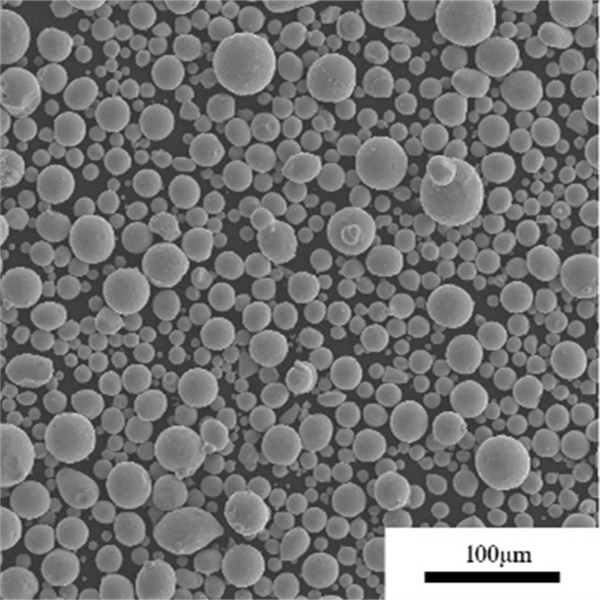
Selection Guidelines
| Factor | Description | Key Considerations |
|---|---|---|
| Alloy Selection | The first and most crucial step involves identifying the aluminum alloy that best suits your application’s demands. | * Mechanical Properties: Consider the required tensile strength, yield strength, fatigue strength, and ductility for the finished part. Different alloy series (e.g., 1xxx, 6xxx, 7xxx) offer a spectrum of strength and weight characteristics. * Corrosion Resistance: If the part will be exposed to harsh environments, select an alloy with superior corrosion resistance, such as the marine-grade 5xxx series. * Weldability: Assess the need for post-processing techniques like welding. Some alloys, like the 2xxx series, have lower weldability. * Formability: Determine the level of shaping required for the final part. High-purity aluminum (1xxx series) offers excellent formability, while stronger alloys may require additional forming techniques. |
| Powder Chemistry | Chemical composition of the powder directly influences the final part’s properties. | * Alloying Elements: The specific elements added to the aluminum base (e.g., magnesium, silicon, copper) determine the final properties. Datasheets from reputable suppliers will detail the exact composition of each powder. * Impurity Levels: Minimize the presence of impurities like oxides, iron, and silicon as they can negatively impact mechanical properties and printability. * Chemical Homogeneity: Ensure consistent distribution of elements throughout the powder particles for uniform properties in the finished part. Reputable suppliers with rigorous quality control procedures can guarantee this. |
| Powder Morphology | Particle shape and size significantly affect powder flowability, packing density, and printability in Additive Manufacturing (AM) processes. | * Particle Size Distribution: A well-distributed particle size range with minimal oversized or undersized particles optimizes powder flow and packing density. * Particle Shape: Ideally, spherical or near-spherical particles offer superior flowability and minimize inter-particle friction during AM processes. * Surface Area: A higher surface area can increase reactivity with atmospheric elements, so some AM techniques may require powders with a controlled surface area to minimize oxidation. |
| Powder Flowability | The ease with which powder flows is critical for consistent layer formation in AM processes. | * Apparent Density: This refers to the weight of powder per unit volume, considering both the solid particles and the air voids between them. A higher apparent density often translates to better flowability. * Angle of Repose: The angle at which a pile of powder naturally rests is an indicator of flowability. A lower angle of repose signifies better flow. * Flow Rate: Measures the speed at which powder flows through an opening. This directly impacts the speed and efficiency of AM processes. |
| Powder Manufacturability | The method used to produce the aluminum alloy powder can influence its characteristics. | * Atomization Technique: Gas atomization offers superior control over particle size and morphology compared to techniques like water atomization. * Powder Purity: Inert gas atomization environments minimize contamination during the atomization process, resulting in higher purity powders. |
| Powder Additives | In some cases, specific additives are incorporated into the powder to enhance printability or final part properties. | * Flow Agents: These improve powder flowability for a more consistent printing process. * Sintering Aids: These additives may be used to lower the sintering temperature required for densification, which can be beneficial for some AM techniques. |
| Supplier Qualification | Selecting a reliable supplier with a proven track record is essential for quality and consistency. | * Quality Control Procedures: Ensure the supplier adheres to strict quality control measures throughout the manufacturing process. * Certification: Look for suppliers with certifications relevant to the AM industry, such as ASTM or NADCAP standards. * Powder Characterization Data: Reputable suppliers will provide detailed data sheets with chemical composition, particle size distribution, and other relevant powder characteristics. |
Pros vs. Cons of Aluminum Alloy Powder
| Pros | Cons |
|---|---|
| Excellent Strength-to-Weight Ratio: Aluminum alloys in powder form boast exceptional strength relative to their weight. This makes them ideal for applications in aerospace, automotive, and transportation industries where lightweight, high-performance components are crucial. Compared to steel, aluminum alloy powder can offer up to 30% weight reduction while achieving comparable or even superior strength properties. | Processing Challenges: Aluminum alloy powder can be delicate and requires careful handling during various stages of production. The powder’s flowability needs to be precisely controlled to ensure consistent density in the final part. Additionally, some aluminum alloys may require specific atmospheres or specialized equipment during additive manufacturing processes like 3D printing to minimize oxidation and ensure optimal results. |
| Unlocks Complex Geometries: Unlike traditional subtractive manufacturing techniques like machining, aluminum alloy powder allows for the creation of intricate and complex geometries. Additive manufacturing processes using this powder can fabricate parts with internal channels, lattices, and other features that would be difficult or impossible to achieve with conventional methods. This design freedom opens doors for innovation in lightweighting, heat dissipation, and part functionality. | Limited Part Size: While offering advantages in geometric complexity, aluminum alloy powder technology may have limitations regarding the final part size. The current capabilities of 3D printing machines and powder bed fusion processes might restrict the production of very large components. However, advancements in technology are continuously pushing these boundaries, and the maximum achievable part size is expected to grow in the coming years. |
| Reduced Material Waste: Compared to subtractive manufacturing processes that generate significant scrap material, aluminum alloy powder offers a more sustainable approach. In 3D printing, unused powder can often be recycled and reused, minimizing waste and production costs. This focus on material efficiency aligns well with growing environmental concerns and fosters responsible manufacturing practices. | Cost Considerations: The cost of aluminum alloy powder can be higher than traditional aluminum ingots or bars. This is partly due to the additional processing involved in creating the powder and the specialized handling requirements. However, the benefits of lighter weight, complex geometries, and reduced waste can offset the initial cost premium in specific applications. Additionally, as the technology matures and production volumes increase, the cost of aluminum alloy powder is expected to become more competitive. |
| Superior Surface Finish: Aluminum alloy powder can produce parts with exceptional surface finishes. Additive manufacturing processes can achieve a high degree of detail and resolution, resulting in components with a smooth and aesthetically pleasing appearance. This eliminates the need for extensive post-processing steps like grinding or polishing, further streamlining the production process. | Potential for Anisotropy: The layering inherent in additive manufacturing processes using aluminum alloy powder can introduce a slight anisotropy in the final part’s mechanical properties. This means the strength and behavior of the material might vary depending on the direction of loading. However, by optimizing the printing process parameters and potentially using post-processing techniques like heat treatment, engineers can mitigate the effects of anisotropy and ensure consistent performance. |
| Tailored Properties: Aluminum alloys can be formulated with specific elements like silicon, magnesium, or copper to achieve desired mechanical properties. This allows for the creation of aluminum alloy powder customized for particular applications. For instance, adding silicon can enhance strength, while magnesium improves ductility. By selecting the appropriate alloy composition, engineers can optimize the powder for its intended use. | Safety Precautions: Aluminum alloy powder, like most metal powders, can be flammable and pose a health risk if inhaled. Proper handling procedures, ventilation systems, and personal protective equipment are essential to ensure a safe working environment when working with this material. |
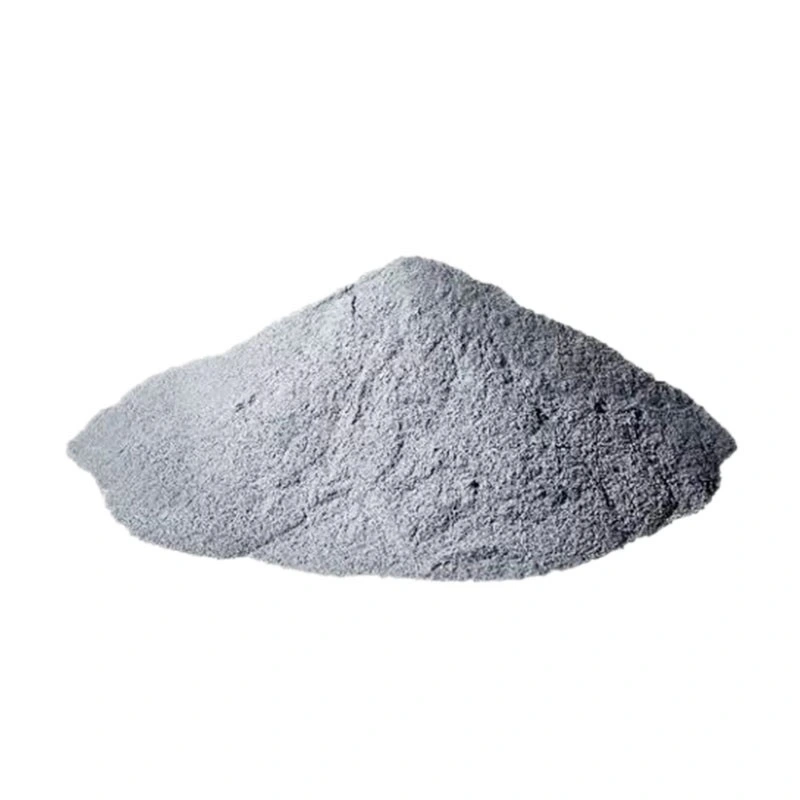
FAQs
Q: What is the most widely used aluminum alloy powder?
A: Aluminum 6061 is the workhorse alloy leveraged across automotive and general engineering for its versatile mechanical properties, corrosion performance and moderate cost.
Q: How does aluminum powder cost compare with titanium?
A: Aluminum powders start around $5/lb versus $50+/lb for titanium demonstrating significant conversion cost benefits for lightweighting despite lower mechanical properties.
Q: Does aluminum powder oxidize?
A: Fine aluminum powders present oxidation risks during handling, storage and processing requiring inert environments and tight quality controls to minimize risks.
Q: Can you 3D print aluminum alloy parts?
A: Yes, aluminum DED and binder jet AM is maturing quickly for structural aerospace components leveraging advanced powders and processing refinements to achieve over 99% density after sintering.
Share On
MET3DP Technology Co., LTD is a leading provider of additive manufacturing solutions headquartered in Qingdao, China. Our company specializes in 3D printing equipment and high-performance metal powders for industrial applications.
Inquiry to get best price and customized Solution for your business!
Related Articles
About Met3DP
Recent Update
Our Product
CONTACT US
Any questions? Send us message now! We’ll serve your request with a whole team after receiving your message.

Metal Powders for 3D Printing and Additive Manufacturing
COMPANY
PRODUCT
cONTACT INFO
- Qingdao City, Shandong, China
- [email protected]
- [email protected]
- +86 19116340731






